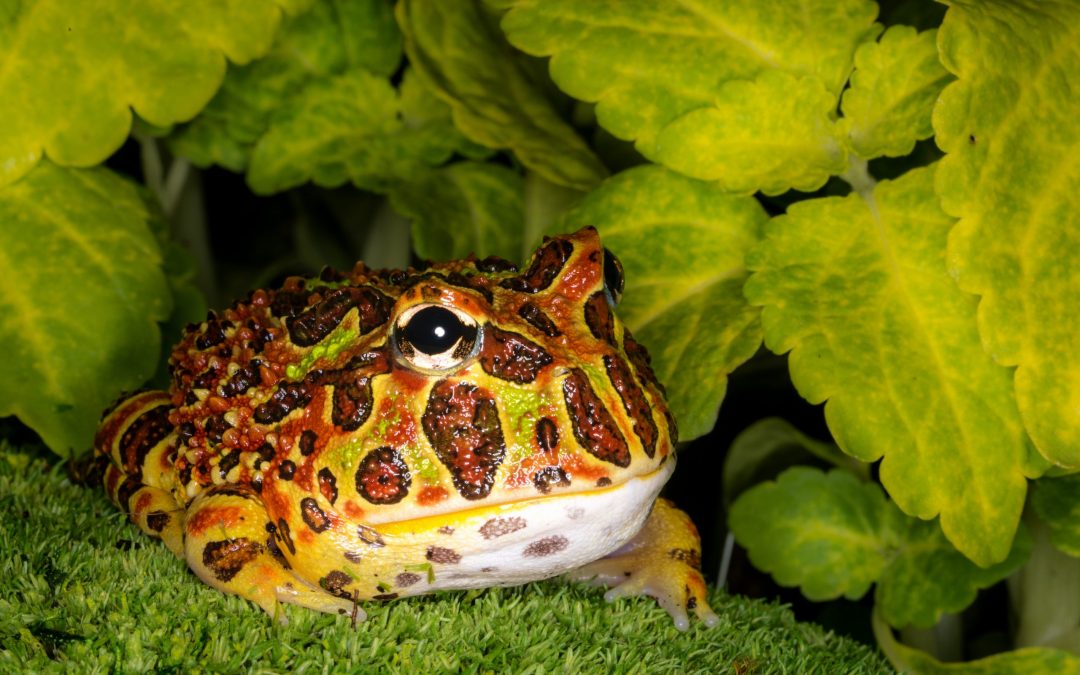As mentioned earlier in this book, you need to house your pet Pacman in an enclosure or a terrarium because they are quite sensitive creatures that need to be protected from people or other potential threats and mostly because they are the kind of pet that’s for observation only.
- Cage Size
The rule of thumb when it comes to keeping a Pacman frog is to provide them on a separate enclosure. They shouldn’t be mixed with other frogs or even breeds of the same kind because these animals are cannibalistic in nature. They’re the kind of frogs that are sit-and-wait predators, so if you place them with other frogs that are smaller breeds, it will be no surprise if they eat them.
Since Pacman frogs are inactive most of the time, they don’t need a huge enclosure or terrarium; you can settle with a 10 – gallon tank, this is the minimum. Never go below 10 gallons. You can also reach around 20 gallons but going beyond that is not necessary. The terrarium should also have a screen lid or cage top because some Pacman frog breeds are known to escape.
For tadpoles, you can choose to keep them in a small plastic cage that can be bought at various pet stores. Keep in mind though that it may be difficult to adjust the heat temperature since the casing is plastic, experts recommend buying a glass cage or glass terrariums with a screen lid.
You should also make sure that there are lots of hiding places such as a burrowing land hideout. Also provide branches (for exercise opportunities, although Pacman frogs may not need that) and lots of plants inside. Don’t forget to include the water bowl because it will act as a pond for these frogs.
- Plants, Branches and Bark Bedding
Pacman frogs love to stay on the ground, and hang around dry litter of leaves pretty much all day, this is how they live in the wild, which is why it’s vital that you create the same kind of environment so that they can easily adapt and be comfortable with their new home. Provide your frog’s enclosure with lots of branches and plants or leaves as well as hiding places or areas where they can sit still until you feed them; this will enable them to practice their natural ability, make them feel comfortable in their new home, and will also make them feel close to their natural habitat even in captivity.
Try adding green or brown leaves (preferably a fresh one) because it will make your frog feel safe. Aim to use live plants because it can also help increase as well as maintain humidity inside the enclosure. Keep in mind to only use non – toxic plants to avoid being exposed to chemicals that could adversely affect your frog’s health. If you buy a plant from the pet store you may not be sure if it is safe for your frog due to insecticides and toxic fertilizers. Just make sure to properly wash them with soap and water to remove harmful chemical residues.
It’s also helpful that you set up bark bedding made out of coconut – fiber at the bottom of the terrarium; your frog might get interested in burrowing it, it is also a good form of exercise.
Create a 5 – 10 cm or 2 – 4 inches of bark bed on the enclosure; just make sure to replace the bedding at least once in a month and constantly remove droppings.
Make sure to clean the small branches if you’re going to grab one from outside plants. Also wash the bake branches before using it. You can buy bendy vines at various pet stores – they also make a great cage décor. You may also want to arrange, and re – arrange the branch, vines and plant settings from time to time.
- Water Bowl
You should also provide a large but shallow water bowl for your Pacman frog (or a size that is suitable for your petto avoid the risk of drowning) because in the wild these creatures can be found in ponds and freshwater marshes, it will help them cope up with their new environment. You might want to include plants inside the water dish as well. Frogs will need to cool off if the temperature inside is humid, make sure to also place the bowl on the warmer area of the enclosure so that if it gets cold, the water may not be too cold for them. Frequently clean the bowl to maintain cleanliness.






 Author and long-time animal lover. Sharing knowledge on pet care through experience and the written word.
Author and long-time animal lover. Sharing knowledge on pet care through experience and the written word.